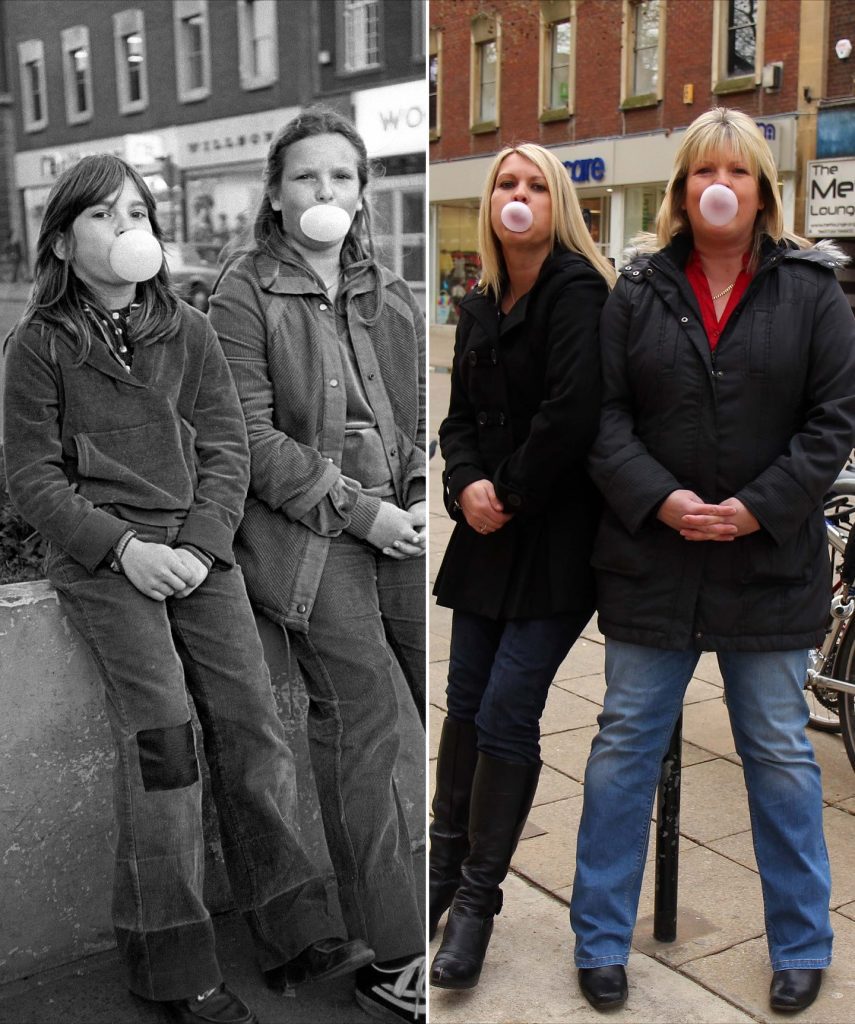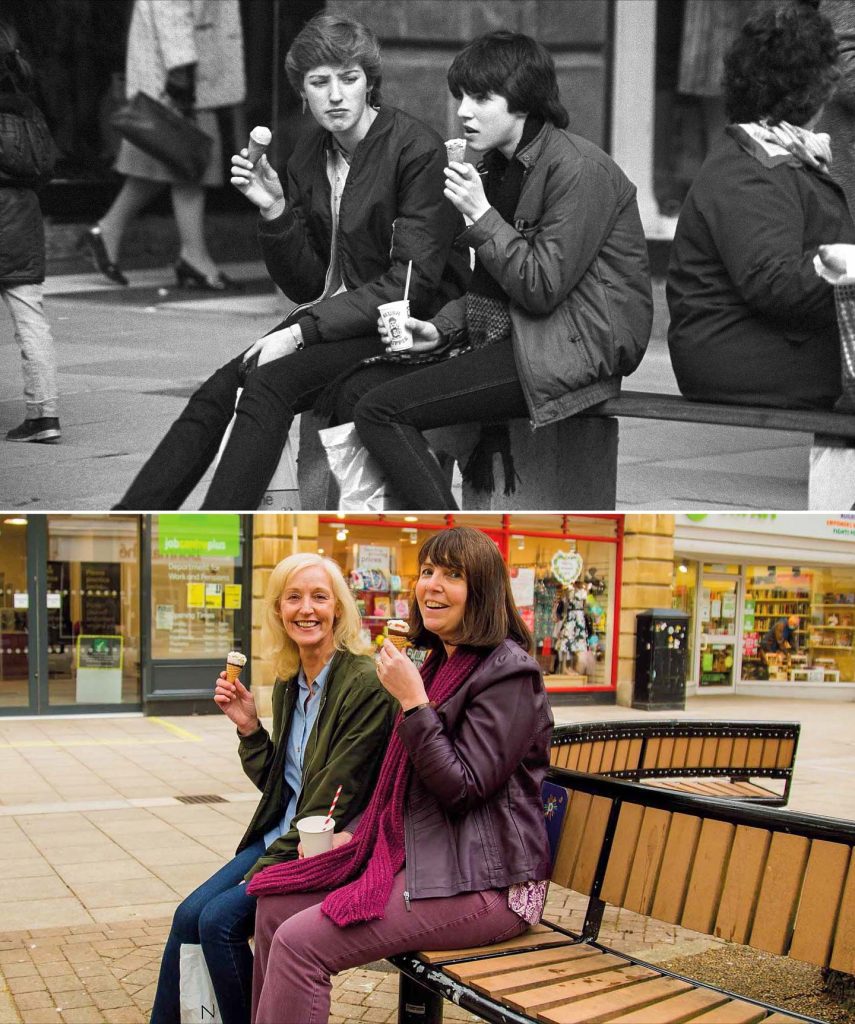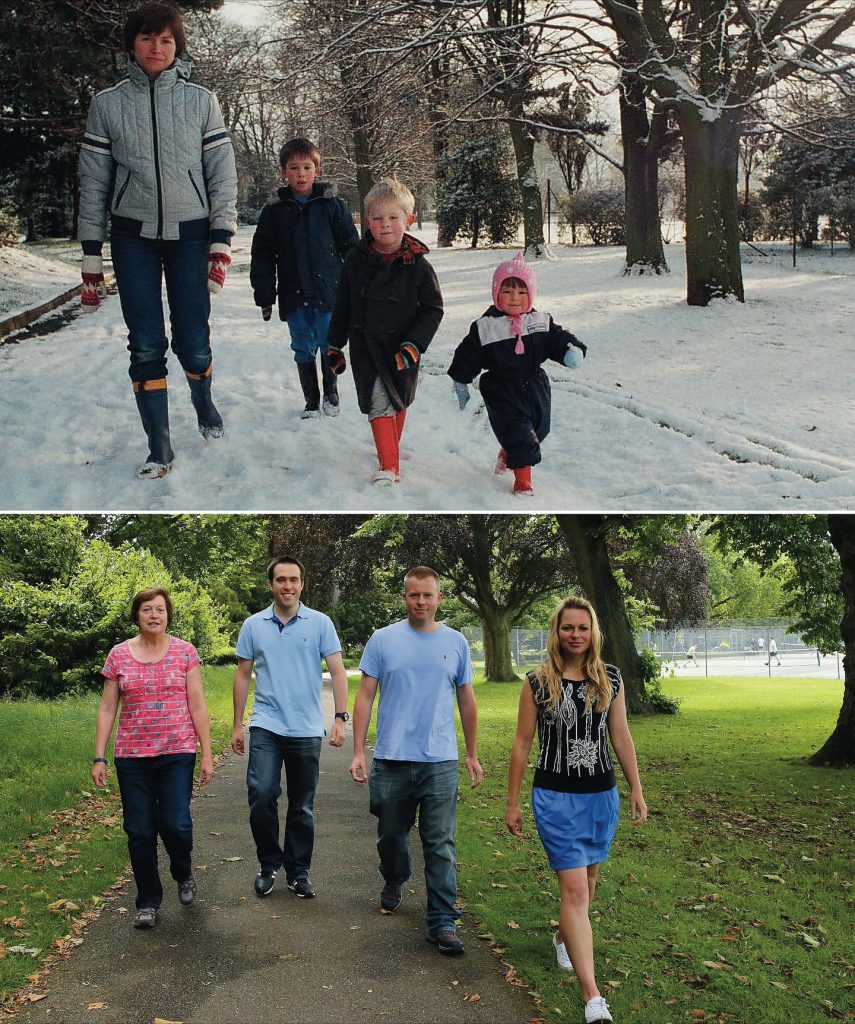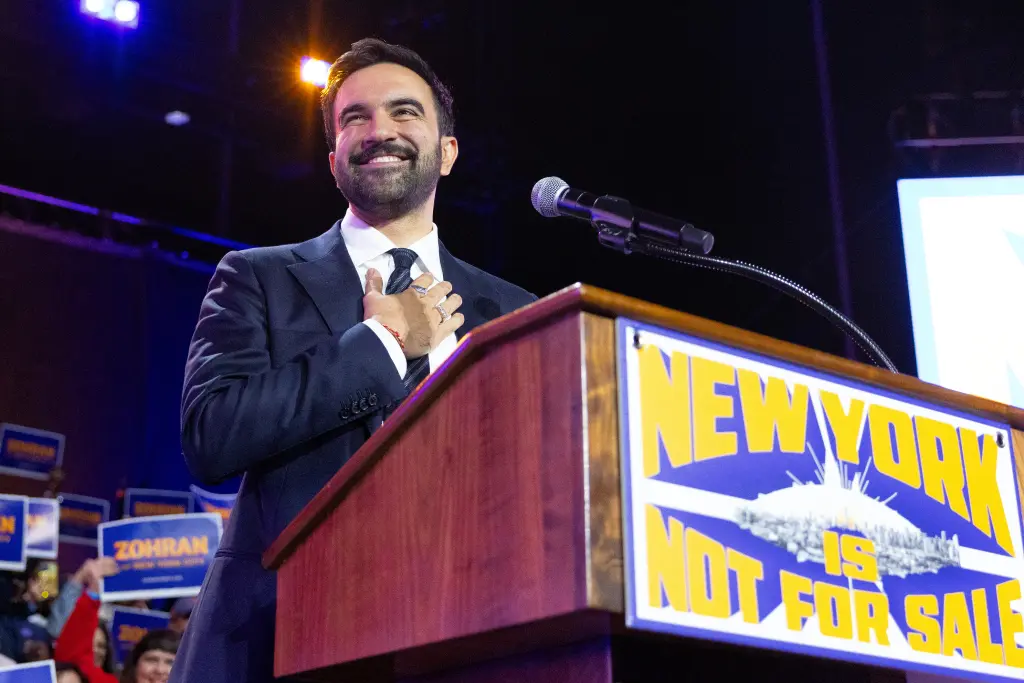Photographer Tracks Down the Same People He Captured 40 Years Ago to Recreate Their Portraits — A Powerful Look at Time, Memory, and Humanity
In a world that moves faster every year, one British photographer decided to slow things down — by going back in time. Chris Porsz, a retired paramedic from Peterborough, England, has spent more than four decades turning his love for street photography into one of the most touching and human visual stories ever told. What began as a hobby in the late 1970s became a life mission: to reconnect with the people he once photographed as strangers and capture them again, in the exact same spots, decades later.

In the late 1970s and 1980s, Porsz roamed the streets of his hometown with a camera in hand, freezing everyday life as it unfolded. He photographed teenagers hanging out on corners, friends laughing outside cafes, and families going about their day. His portraits were raw, spontaneous, and real — a time capsule of working-class Britain filled with energy, youth, and emotion. Most of his subjects were strangers, people he saw only for a few seconds. He never imagined he’d cross paths with them again.

But as the years went by, those moments started to mean more. When he looked back at his photographs decades later, Porsz realized how special they were — not just as pictures, but as memories of a community and an era that had changed forever. Determined to find the people in his old photos, he began an extraordinary search. He went through public records, talked to local newspapers, shared his old images online, and asked for help from the very city that once filled his lens. Slowly, one by one, people began to resurface.
What followed was something remarkable. Over 300 people from his original photographs agreed to meet him again — often in the same location, standing in the same pose, and sometimes even wearing similar clothes. The result is his celebrated series Reunions and its follow-up Reunions 2, collections of side-by-side portraits that tell the quiet story of time’s passage. Each pair of images is more than a comparison of “then and now.” It’s a reminder of how much can change — and how much can stay the same.

One of the most striking examples is the portrait of a young man leaning against a car in the late ’70s, full of confidence and style. Decades later, the same man stands beside the same model of car, older and wiser but smiling just as brightly. The gray tones of the past meet the vibrant colors of the present, and together they create something timeless.

For many of Porsz’s subjects, the experience has been deeply emotional. Some had lost touch with friends or siblings who appeared in the original photos. Others brought their own children or grandchildren to the reunion shoots, bridging generations through one powerful moment of recognition. It wasn’t just about photography anymore — it was about connection, memory, and rediscovery.

Porsz himself describes the project as a “labor of love.” It took patience, luck, and years of detective work. Some reunions took months to arrange; others happened by chance. But each one became a story of its own. “What I found most moving,” Porsz once said in an interview, “was how the people changed — not just in appearance, but in their outlook. Life had taken them in so many directions, yet when they stood in the same place again, they all felt that instant spark of nostalgia.”

The Reunions books have now reached global audiences, celebrated not just for their visual beauty but for their emotional honesty. Viewers see themselves in these photos — not literally, but through the shared experience of time passing. The wrinkles, gray hair, and softened smiles aren’t signs of loss; they’re proof of life lived fully.
In a culture obsessed with youth and perfection, Chris Porsz’s work is a quiet reminder that beauty lies in change — in the stories etched into every face and the passage of time that connects us all. His camera didn’t just capture people; it captured the spirit of humanity itself, frozen for a moment and then lovingly revived 40 years later.



